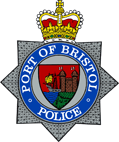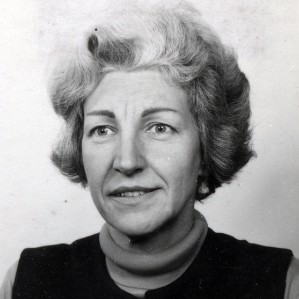Related Research Articles

The Bridgwater and Taunton Canal is a canal in the south-west of England between Bridgwater and Taunton, opened in 1827 and linking the River Tone to the River Parrett. There were a number of abortive schemes to link the Bristol Channel to the English Channel by waterway in the 18th and early 19th centuries. These schemes followed the approximate route eventually taken by the Bridgwater and Taunton Canal, but the canal was instead built as part of a plan to link Bristol to Taunton by waterway.

The River Mersey is a major river in North West England. Its name derives from Old English and means "boundary river", possibly referring to its having been a border between the ancient kingdoms of Mercia and Northumbria. For centuries it has formed part of the boundary between the historic counties of Lancashire and Cheshire.



Bootle is a town in the Metropolitan Borough of Sefton, Merseyside, England, which had a population of 51,394 in 2011; the wider Parliamentary constituency had a population of 98,449.

The Department for Transport (DfT) is a department of His Majesty's Government responsible for the English transport network and a limited number of transport matters in Scotland, Wales, and Northern Ireland that have not been devolved. The department is run by the Secretary of State for Transport, currently, Mark Harper.

The Pier Head is a riverside location in the city centre of Liverpool, England. It was part of the former Liverpool Maritime Mercantile City UNESCO World Heritage Site, which was inscribed in 2004, but revoked in 2021. As well as a collection of landmark buildings, recreational open space, and a number of memorials, the Pier Head was the landing site for passenger ships travelling to and from the city.

Brocklebank Dock is a dock on the River Mersey, England, and part of the Port of Liverpool. It is situated in the northern dock system in Bootle, connected to Langton Dock to the north and Canada Dock to the south. Carriers' Dock was originally sited to the east.


Morpeth Dock is a dock at Birkenhead, Wirral Peninsula, England. The dock is situated between the River Mersey and Egerton Dock.
Thomas Steers was thought to have been born in 1672 in Kent and died in 1750. He was England's first major civil engineer and built many canals, the world's first commercial wet dock, St. George's Church at the site of Liverpool Castle, and a theatre. He designed Salthouse Dock in Liverpool, which was completed by Henry Berry after Steers' death.

The Port of Liverpool Police is a non-Home Office ports police force with responsibility for Liverpool, Bootle, Birkenhead, Ellesmere Port and Eastham Dock Estates and Freeports, as well as the Manchester Ship Canal areas in the north-west of England.

The Port of Bristol Police (PoBP) is a ports police force with responsibility to protect the port complexes and community situated at the mouth of the River Avon on the border between Bristol and Somerset. Officers are attested under powers in legislation derived from the Harbours, Docks and Piers Clauses Act 1847.

Woodside is an area of Birkenhead in the Metropolitan Borough of Wirral in Merseyside, England. It is situated opposite Liverpool Pier Head across the River Mersey.

Christ Church is a former Anglican parish church, now redundant, at Weston Point Docks, Runcorn, Cheshire, England. It is recorded in the National Heritage List for England as a designated Grade II listed building.

Henry Robinson Palmer (1795–1844) was a British civil engineer who designed the world's second monorail and the first elevated railway. He is also credited as the inventor of corrugated metal roofing, still one of the world's major building materials.
The Melbourne Harbor Trust was established in 1877 to improve and operate port facilities for the growing city of Melbourne. It was superseded by the Port of Melbourne Authority in 1978 and later by the Port of Melbourne Corporation.
Competent harbour authorities (CHA) in the United Kingdom are those harbour authorities that have been given statutory powers relating to the provision of pilotage in their waters. The description was created by the Pilotage Act 1987, at which point a CHA had to be one whose harbour was wholly or partly within a pilotage district where at least one act of pilotage had been performed, or where a pilotage exemption certificate had been in force, between 1984 and 1987. However, the act provided a procedure by which other harbour authorities could be assigned CHA status and some harbours have taken advantage of this process. The Marine Navigation Act 2013 amended the Pilotage Act to provide a reverse process, so that harbour authorities could be relieved of CHA status.

Mary Patricia Kendrick MBE born Mary Patricia Boak was a British tidal engineer who was an expert on silt. She worked on many projects but she is known for leading a team working on the Thames Barrier. She broke a 200 year long list of Admirals who looked after keeping the River Mersey navigable when she appointed Acting Conservator of the River Mersey - a role that dates back to 1625.
References
- ↑ Kendrick, Mary. "Mersey Basin Campaign | Mersey People: The Conservator". merseybasin.org.uk. Retrieved 21 June 2020.
- 1 2 Mersey Gateway | Halton Borough Council Archived September 28, 2007, at the Wayback Machine
- ↑ The junior officers
- ↑ [ permanent dead link ]
- ↑ Keleny, Ann (28 July 2015). "Mary Kendrick". The Times. ISSN 0140-0460 . Retrieved 26 December 2019.
- ↑ "121: mary kendrick". Magnificent Women. Retrieved 26 December 2019.